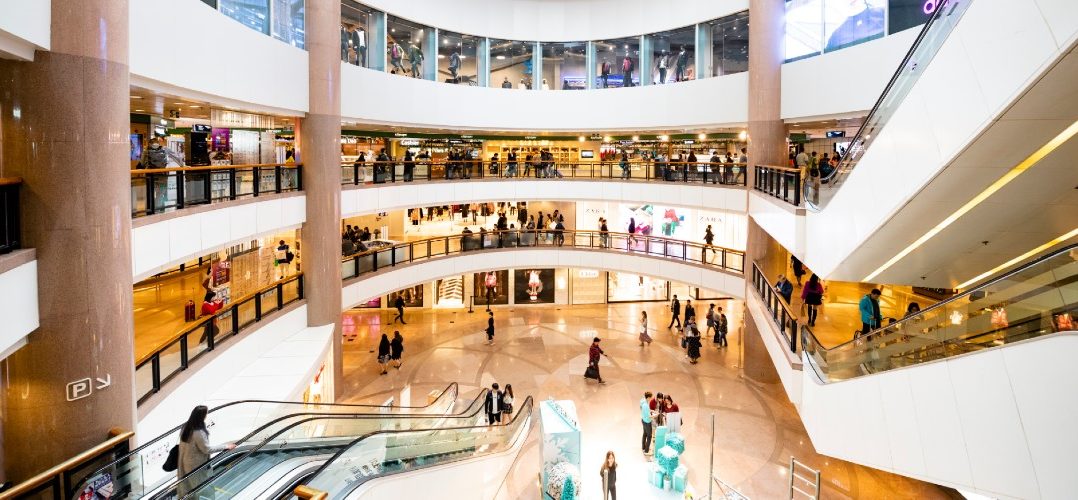We can speculate, of course. But the reality is that no-one truly knows what the ‘new normal’ will look like. Seismic, forced shifts in consumer behaviour have created a new paradigm. Customers have reconnected with supermarkets in an era when the relationship was fracturing. Shop staff have become one of the front lines of key workers. Fashion has been devastated. Home has become a work place, a socialising place, a rest place, connected via Zoom and Microsoft Teams to friends and colleagues. Social places lie quiet – and will do for some time.
And safety and security have become prioritised over liberty and convenience.
It is still far too early to predict the medium- to long-term implications on how we live. Some changes will reshape society and yet, as people, we are resilient and adaptable and often have short memories. Normal will be different, but how different?
Change has been high on the MAPIC agenda over the past decade anyway – a theme that was to be emphasised even before the health crisis struck.
“Our intention for 2020 had always been to focus on new business models for retail, mixing uses, compelling cities, refurbishment and extensions, sustainability and the innovation that underpins all of these,” says MAPIC director Nathalie Depetro.
“Even more importantly, the way we will approach this at MAPIC will be different, because our emphasis will be on collaboration, the creation of new business models, sustainability, data sharing and a move towards less proprietary attitudes and more sharing and working together for a common goal. Our industry’s revival relies on us pulling together and rebuilding with each other.”
That rebuilding is beginning right now, as much of Europe and Asia is reawakening. Across the month of April, stores and shopping centres began to reopen, dependent on national regulations, with a host of new operational systems in place to prioritise hygiene and social distancing.
China, came first. But performance at reopened stores has been slow to recover and unlocked Chinese consumers have been cautious about returning to malls, thanks to economic and health concerns. National Australia Bank‘s head of research, Asia, Christy Tan says China’s consumer economy has undergone a major shift to “consumption that is more indoor-based than outdoor-based”.

Mixed use retail and leisure: What happens next? – White Paper
In the initial stages, people have been going out for food/essentials, but not discretionary spend. Similarly, cinema box office figures remain all but wiped out, while visits to restaurants have been massively down. Given the size and scale of many Chinese cities, feedback from advisor Cushman & Wakefield suggests that mask wearing and hygiene have been prioritised as more pragmatic than social distancing.
Ingka Group reported visitor numbers back to 70-80% of normal levels in China, while in Germany – which has also reopened subject to various federal state rules – footfall is at 63% with 40 of 57 tenants open.
“In addition to waiving rent and service fee charges for all tenants, Ingka Centres has invested in measures to drive e-commerce traffic to their sites, and to help retailers work together to share home-delivery and click-and-collect services.” says Ingka
Meanwhile, the UAE has come out of lockdown rules including the reopening of shopping malls based on the Dubai Economy Department advice to re-open gradually, conduct 24-hour sanitisation daily and undergo a screening process that examines the health of all visitors. Malls must also have a mandatory quarantine site to isolate potential coronavirus cases. Shoppers are only allowed three hour visits and must wear a mask and maintain social distancing. Children aged 3-12 and people over 60, are not permitted. Entertainment and cultural destinations remain closed.
Germany, Austria, Italy, Greece, the Czech Republic and Switzerland have been among the first nations in Europe to reopen their stores and services, although variations in approach, phasing and datelines exist across the continent. France will follow soon.
“In terms of the retail picture overall, we were already on a certain road and I think too many companies have tried to keep something working that had run out of steam. What the crisis has done is fast forward us five years and the rate of change is going to be very fast, not because of the problem of physical retail – I believe people will always want to engage – but because retail has to respond to what people want.” says Ian Sandford, head of Madrid-based Eurofund Group
Darren Richards, head of real estate at UK REIT British Land, agrees and says he sees the current situation more as an accelerator than an agent of change.
“The inescapable conclusion as a result is that we are going to need less retail floor space, but again this was already destined to happen. I use that term advisedly because at the moment what we tend to see, especially given the fractured ownership of town centres, is when a retailer closes down the landlord attempts to re-lease the unit as a store – so in an era of less demand, we are not reducing supply,” he says.
“That said, even in a bullish scenario where 40% of sales migrate online, physical stores will still account for 60% of retail spend. It’s a considerable figure and it also won’t be binary, rather the future will be where online and physical retailer are very much interlinked.”
German shopping centre group ECE was one of the first in Europe to open up its centres. In the initial phase around 80% of its portfolio reopened and about three quarters of the stores within them. Managing partner Volker Kraft believes that the post-crisis period will see further polarisation, with flagship and neighbourhood schemes likely to flourish at the expense of a squeezed middle.
Kraft believes that how this all impacts asset management and the retail mix is the key question.
“Our view is that the pandemic is not a game-changer but rather a massive accelerator – all these consumer and structural changes have been present for some time but the crisis has brought things forward,” he says.
“Firstly, we will see consolidation as strong retailers acquire and take a bigger market share as struggling retailers disappear. Secondly, we will see strong centres and neighbourhood centres flourish but the average centres squeezed. The ones stuck in the middle may really struggle.”
Understandably, right now uncertainty reigns. The impact of reopening on new Covid19 cases is yet to be fully understood, with the market braced both for finding out what the new normal looks like and for any future shocks should the control of pandemic cases demand further shutdowns.
Yet ultimately the shifts seem more likely to simply accelerate established trends – the year 2030 appears to have arrived in 2020.
Top image: Getty Images – JohnnyGreig




